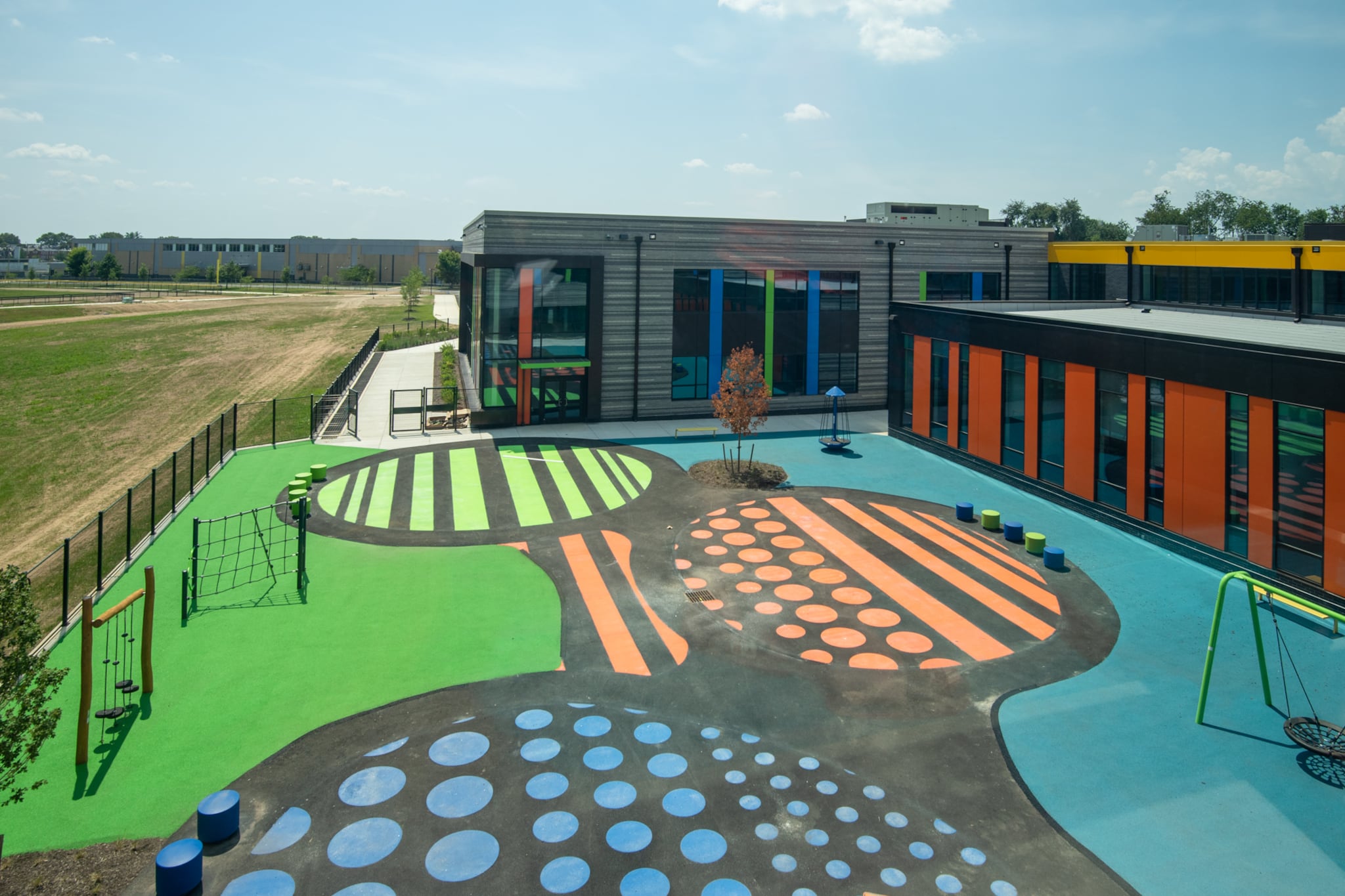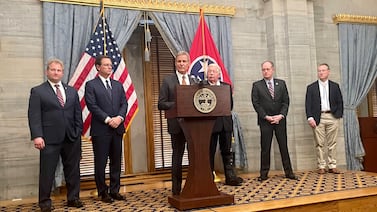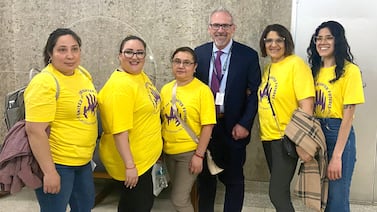Philadelphia unveiled Wednesday a new $80 million elementary school in a growing and diverse part of the city — the first since 2007 that is an entirely new school and not a replacement for an older building.
Northeast Community Propel Academy, a kindergarten to eighth grade school in the Mayfair section of Northeast Philadelphia, drew about 1,100 students from three crowded nearby elementary schools and one middle school, which is slated to close at the end of this school year. In a district that is predominantly students of color, the student body at Propel is almost evenly divided among white, Black, Asian American, and Latino students, and those that identify with one or more groups. Thirty percent of the school are English language learners.
“This is a state-of-the-art, 21st century learning environment,” said Superintendent William Hite at an event to formally open the new school after it welcomed students Tuesday. “All children deserve buildings like this one.”
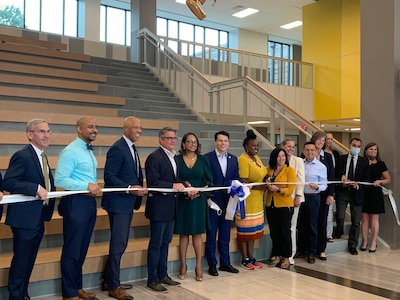
Hite said the new school is a model of diversity, “a great reflection of ... the coming together of different communities,” he said. “If I had my way, schools like this would be going up in every neighborhood in Philadelphia.”
The new 180,000-square-foot building, which can accommodate up to 1,900 students, draws from nearby Edwin Forrest, J.H. Brown, and Mayfair elementary schools. It also pulls students from Austin Meehan Middle School, which is scheduled to close. The catchment area for the new school, as well as the name, was developed with input from the community.
“It is called Propel Academy because it is our desire to do a rigorous ... STEAM-focused curricular program to propel our students onward and upward to be productive and innovative members of not only this neighborhood, but also our city, our state, and beyond,” said founding Principal Dywonne Davis-Harris. STEAM stands for science, technology, engineering, arts, and mathematics.
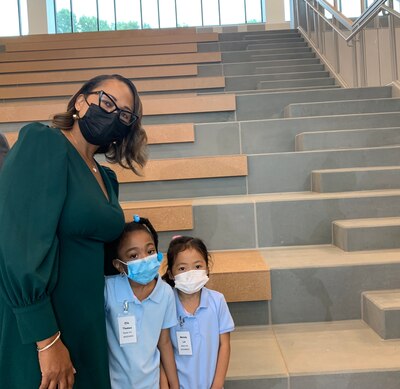
In recent years, the district has built several new elementary schools and it has created new themed high schools. But it has been a long time since demographics necessitated the creation of an entirely new elementary school to accommodate a growing student population.
The last new elementary school created in the district, as opposed to replaced with a new building, was the Juniata Park Academy in 2007. The Sadie Alexander-University of Pennsylvania Partnership School in University City opened in 2004. The impetus for that school was not overcrowding in other neighborhood schools. Rather, it was opened in partnership with the University of Pennsylvania and the Philadelphia Federation of Teachers in an effort to draw more children from the racially and socioeconomically diverse neighborhood — including the children of Penn employees — into the public system.
This year, the district is opening three new buildings — one in University City housing Powel Elementary School and Science Leadership Academy Middle School, and a replacement for Solis-Cohen elementary school, also in the Northeast.
Two other replacement buildings are in the works, one for T.M. Peirce in North Philadelphia and another for Cassidy elementary in West Philadelphia.
Built during the pandemic and designed to serve grades kindergarten through eight, Propel has two schoolyards, one for younger students and one for older students, with appropriate equipment. It has a media center, a music suite, “maker spaces,” and four classroom wings. Three of the wings are for K-5 students and one for those in middle school.
A wide staircase near the main entrance has not only steps for ascending to the next floor, but bleacher-style seats for students to collaborate and socialize.
Propel Academy sits close to Mayfair Elementary, which had grown to be by far the largest elementary school in the state with nearly 2,000 students. It is across a parking lot from two Mayfair additions opened in 2018 to accommodate a student population that had nearly doubled in six years, unprecedented growth fueled in part by immigration.
Also attending the ribbon cutting were Mayor Jim Kenney, U.S. Rep. Brendan Boyle, and City Councilman Bobby Henon.
The construction of the new school was unusual in that the district paid an architectural firm and contractor to build it, rather than supervising construction itself, a public-private partnership that departs from common practice. Gilbane, Inc., a 150-year-old firm that specializes in sustainable building and facilities management, completed the project in less than 18 months. Financing closed on the building the week before the pandemic shut down schools in March 2020.
“We worked tirelessly through the global pandemic to deliver this,” said Ed Broderick, President and CEO of Gilbane Development Company. “It’s a significant investment in the future.”
Before the pandemic hit, the district was in the midst of a comprehensive school planning review to assess its infrastructure needs, which can be controversial since such projects look at schools that might need to close in addition to where they might need to be built. But that process was halted due to the pandemic.
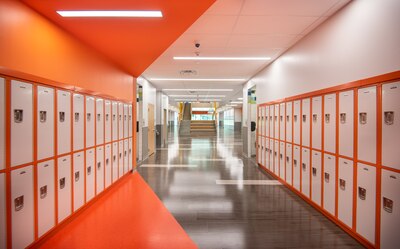
Hite said after the event that while such planning is still on the agenda, right now it has been overtaken by a short-term agenda: how to best spend the federal COVID relief funds over the next three years. “We’re looking at immediate short-term projects,” he said.
The district’s most pressing infrastructure need is making sure all its existing buildings, which average 70 years old, are free of asbestos dust and other toxins including lead paint, a longstanding issue that has caused friction with many school communities.
But Henon said that the emphasis should be on what is going right. The need for a new building was driven by “families choosing Northeast Philadelphia because we have great schools,” he said. Even without a “spectacular” building like this educators “have worked to create learning environments that worked.”
And Davis-Harris, the principal, said that the school was more than just an “amazing” building, but “a microcosm of our nation, what it should be like and what it has the potential to be: a diverse community of human beings who are determined to live and to lead.”


